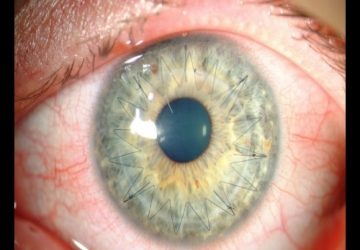
Corneal transplant
Operation goal:
The purpose of performing a corneal transplant is to replace the affected cornea of the eye, due to its exposure to many factors, which can lead to permanent and irreparable diseases or damage. The cornea for transplantation is taken from a dead donor, while this is the most common procedure among various organ transplants.
With the question of Dr. Muhammad Hantira, an honorary assistant professor, ophthalmology department, Umm Al-Qura University, Saudi Arabia
About the methods used to perform corneal transplantation stated:
There are many methods used for corneal transplant surgery. The old method involves completely removing the affected cornea and stabilizing the healthy cornea with sutures (sutures). But when using modern methods that use precise devices such as lasers, only part of the cornea (DSEK) is removed. Also, there are other types of corneal transplant procedures.
Prepare for the operation:
There is no need to match the tissue and blood type when performing corneal transplantation surgery, because there are good treatments that are given to the patient after transplantation, which contribute to the acceptance of the transplanted organ with a high success rate of about 90%. Another reason why such a fit is not needed is that the cornea is a tissue that is not attached to a blood vessel.
In most cases, there is no need for a general examination before surgery. The ophthalmologist performs a comprehensive examination of the eyes, which includes checking the extent of vision, pressure inside the eyes, visual acuity and examining the fundus, in order to ensure the integrity of the retina.
The cornea is transplanted under local or general anesthesia. The doctor should also be consulted with regard to all medications that the patient should stop taking before the operation date. Also, there is a need to fast for 8 hours before the operation.
process:
After instillation of the dilating material into the pupil, local anesthesia is administered to the area or general anesthesia if necessary. According to the traditional method, the surgeon makes a small, thin incision in the cornea, and then removes all corneal tissue. After that, the surgeon sutures the transplanted cornea in its place.
In modern methods of corneal transplantation surgery, there is not always a need to transplant the entire cornea, and only the lining of the cornea can be transplanted (if it is injured) or another part of the cornea is implanted using accurate and modern devices. In laser-based surgery, the cornea that will be transplanted is cut according to the required size and the extent of damage to the original cornea. Then they are fixed - sometimes without the need for stitches -. At the end of the operation, a bandage is placed over the eye.
The surgery takes one to two hours (depending on the type of surgery).
Post-operative treatment:
After corneal transplant surgery:
The patient stays in the hospital under observation for one or a few nights. When modern surgical methods are used, patients are sometimes able to leave the hospital earlier. The patient is instructed on how to use eye drops that contain antibiotics to prevent infection, which he should use for 3 weeks after the operation.
The patient is provided with eye drops to prevent eye infection and to suppress the immune system.
The patient can take pain relievers as needed. While the recovery period is related to the type of corneal transplantation that was followed, as this period is short when using modern methods.
The sutures (sutures) are removed if they are used in surgery, after a few months have passed (in traditional corneal transplant surgery).
In the following cases, the patient should refer directly to the doctor: persistent pain despite the use of analgesics, secretions from the eye, bleeding from the eye, or a high temperature.